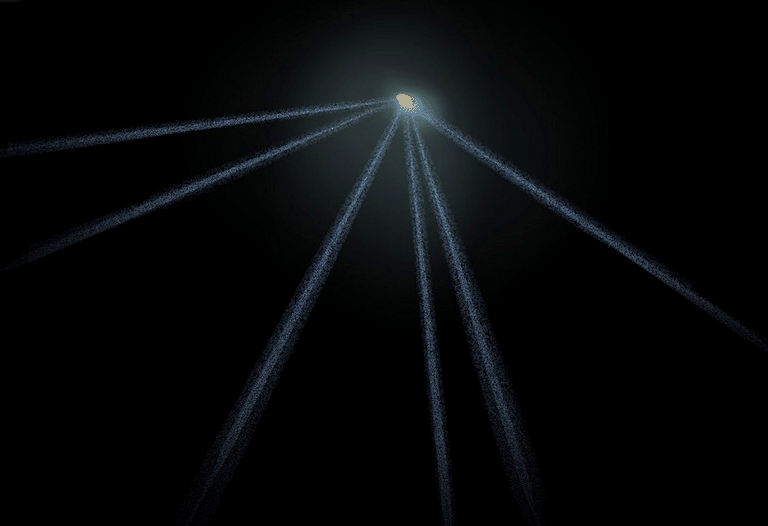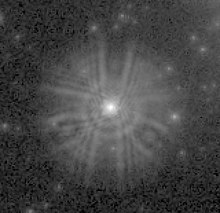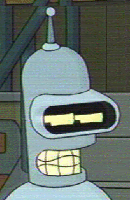


Just wondering here...  but what if this is a real UFO?
but what if this is a real UFO?
Whoa, Bend-- Whoever is driving that UFO is really smart..  'cause look at how they can spell in English!
'cause look at how they can spell in English!



Just wondering here...  but what if this is a real UFO?
but what if this is a real UFO?
Whoa, Bend-- Whoever is driving that UFO is really smart..  'cause look at how they can spell in English!
'cause look at how they can spell in English!
Maybe its the Jesus Express coming back to kick some AntiChrist a$$...: )

Maybe they know...  we know!
we know!
Maneuvering thrusters? Reaction drive exhausts?
I’ve seen medieval German woodcut illustrations showing something similar, what appears to be a multi-tailed comet, fearful inhabitants and destruction of buildings.
"Six objects flying... in formation" - Battleship
;)
“And I think to myself ... what a wonder-full world...”
Heavens Gate for sure.Marshall Applegate is coming in to pick up a few new age items that are in short supply on the Mother Ship.
Ping!

Strange Space Object Stumps Astronomers; Appears to be Asteroid but Has Six Comet-Like Tails!
Someone check to see if Farrakhan is packing a suitcase.


Whatever it is, it doesn’t need space scientists to figure out what it is.
Let’s make up some kind of obscure “ancient prophecy,” publicize it and watch a lot of people freak out!
Do they have any other reason for suspecting it's an asteroid? Cause it sounds like a comet.
From “Metamorphic Star”, a book on myth, archaeoastronomy and anthropolocy by Dwardu Cardona, available on Amazon:
Comets, meteorites, asteroids—as if any of it matters since, in effect, there happens to be no difference between one and the other.
That comets only differ from asteroids “in the form of their orbits” was offered as “a pretty strong probability” by Benjamin Marsh back in 1862. And while some may think that we have learned a lot since then, in this respect present knowledge is not really that much different. As in other scientific matters, what really transpired was the burying of Marsh’s insight, only for it to be exhumed, without giving him proper credit, more than a century later. By 2004, John Brandt and Robert Chapman could report that: “It is now clear that there is much more of a family link between comets and asteroids than we thought 20 years ago.” Comets and asteroids, to say nothing of meteorites, it was then repeated, “may be more similar than astronomers thought.” While “the study of asteroids and comets evolved largely as distinct disciplines,” Brandt and Chapman go on, “they have much in common and the demarcation between the two is not always clear.” Asteroid 4015, among others, has been described as “a marvelous example” of a comet “posing as an asteroid.” Valid arguments have been presented “showing that comets can dynamically evolve into asteroidal orbits.”
It is not, however, merely a matter of orbits. With the advent of better astronomical imaging, it became clear that the very structure of the bodies in question were no different from one another. In fact, it is now clear there is no “other.”
One thing that has been learned for certain is that comets are much more solid than had previously been believed. This was indicated by a pass of Halley’s Comet when analysis of its core proved it to be much more substantive than had formerly been theorized. All of which was later vindicated by the samples collected from Comet Wild 2 by NASA’s Stardust mission, and much more so by the images returned by that same spacecraft which showed the rocky nucleus of the comet in sharp detail. Not only is Wild’s surface solid, it is also pock-marked with pits and craters much like the best of asteroids, as images of the one named Eros clearly showed. So, likewise, with the pictures of comets Borrelly and Tempel 1 that were respectively taken by the spacecrafts Deep Space 1 and Deep Impact.
Surprising as all that seemed to most astronomers, which is surprising in itself, the cratered surface that came to light in cometary nuclei had been predicted by Ralph Juergens and Earl Milton decades earlier. “When a spacecraft finally achieves a rendezvous with one of the comets,” Milton foretold in 1980, “scientists are going to be surprised to find a surface pitted like that of the Moon, Mars, or Mercury.”
Yet, even then, there were those who could not stomach the realization that comets could themselves be impacted without being shattered. Thus cometary craters were at first referred to as being merely “crater-like,” described as “enigmatic circular features,” and judged rather doubtful of being due to impacts. But in the end, not only did the craters win out, no one could contest the solidity of what had formerly been considered fluffy snowballs. Even rocky Chiron, with a diameter of 124-plus miles, who some consider an escaped satellite of Neptune, has now been classed as a comet in disguise.
“Extensive observational evidence firmly establishes Chiron as a comet…Chiron is the first discovered member of the Centaurs, objects that travel in eccentric orbits in the outer solar system. These are catalogued as asteroids, but most would probably become comets if sent into the inner solar system.”
That comets can masquerade as asteroids and vice versa eventually became something of a common declaration. What this has led to is a confession by some that “comets are defying all attempts to understand them.” The “asteroid-comet distinction,” it has been wittily argued, “can be regarded as securely blurred.”
“Apart from the diehards,” wrote Peter James, “it is now increasingly accepted that the ‘dirty snowball’ went much too far in minimizing the solid nature of comets and hence the dangers they represent.” Even Whipple, according to James, finally “dropped” the dirty snowball model he had originated.
Unfortunately, diehards do die hard, and the dirty snowball theory continued to be spouted while this work was being written, even by those who favored the Clovis Comet scenario, as well as those who stressed the similarity between meteorites and comets. All this despite the fact that ice or snow, not to say water, has not been found to be the main constituent of cometary bodies. Craters—yes; but snow or ice is only notable in comets by its absence.
Although not everyone agrees, most asteroids are now known to be the wreckage of once larger bodies. Were one to concentrate all the millions of asteroids that reside in the belt between Jupiter and Mars, they would end up forming a mass smaller than the Moon. Most meteorites, on the other hand, are now recognized as being the mere fragments produced by the collisions of said asteroids. All of which not only turns comets, asteroids, and meteorites into siblings, it also classes all three objects as cosmic rubble.
In some cases, astronomers were no longer even sure whether to classify certain bodies as being one or the other. The distinction finally boiled down to whether a body can be seen spouting a tail. “When astronomers think of comets, they envision tail-spewing icy bodies plunging in from the outer solar system.” Setting aside the obstinate description of them being “icy,” what can be said about cometary tails in this respect?
To begin with, comets are not the only cosmic bodies that are capable of spouting tails. Asteroids, too, have been known to exhibit such appendages, as actual photographs have demonstrated. Even planets outside our Solar System have a tendency to form gigantic comet-like tails. For that matter, so do stars, as the one dubbed Mira clearly shows. Heck—never mind stars; an entire galaxy has been discovered dragging a “cometary” tail behind it.
The cause behind the cultivation of such tails was also forwarded back in 1862 by the same Benjamin Marsh who had surmised that comets only differ from asteroids in the form of their orbits. Predating the discoveries of the controversial Kristian Birkeland by a few decades, Marsh correctly realized that, together with auroral streamers, cometary tails are nothing
but a cosmic form of electrical discharges. But, as with Birkeland’s own discoveries, Marsh’s disclosures were also relegated to the scientific dustbin until retrieved by plasma physicists later in time.
The subject, however, was not entirely forgotten even though the torch was only carried by a few. One of these was Wilhelm Foerster, director of the Berlin Observatory, who, at the end of the nineteenth century, inaugurated a research program by asking Eugen Goldstein to look into the nature of electricity in space. In more than one of his many experiments, Goldstein succeeded in electrically duplicating cometary tails in gas discharge tubes. But even that failed to impress most of his peers. When Foerster asked Hermann Vogel, the director of the Astrophysical Observatory in Potsdam, to make use of his protégé’s services, Vogel replied that “he could not imagine what Goldstein’s experiments had to do with astrophysics.” But even then, the electrical nature of comets continued to be explored by various astronomers into the twenty-first century. Electrical power as an alternative source of stellar, let alone cometary, luminosity is now seriously being discussed by mainstream astrophysicists, so that the electrical field of the Sun need no longer be viewed as anomalous.
But why do comets spout tails while the majority of asteroids do not? As with all cosmic bodies, comets are now known to be enveloped within a plasma sheath, visible as their coma, that limits the extent of their electric field. As has been noted by those immersed in plasma physics, the free electrons within such sheaths “are very effective carriers of electric current.” But such currents are also reliant on the electrical potential of the spatial environment through which they move.
A comet is thus a body—just like asteroids or meteorites—the electric charge of which reaches an imbalance as it moves deeper within the Sun’s own field, causing it to electrically discharge, making its sheath to glow in what we see as its coma and luminous tail. It does not therefore matter what one calls terrestrial impactors or their shrapnel. It all comes down to cosmic rubble.